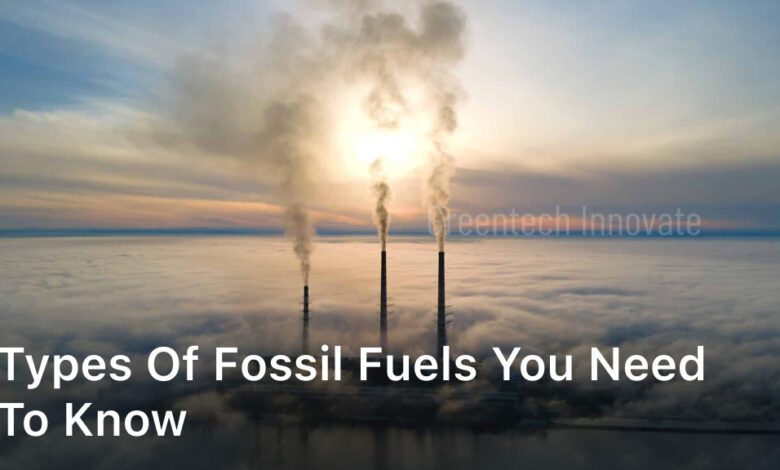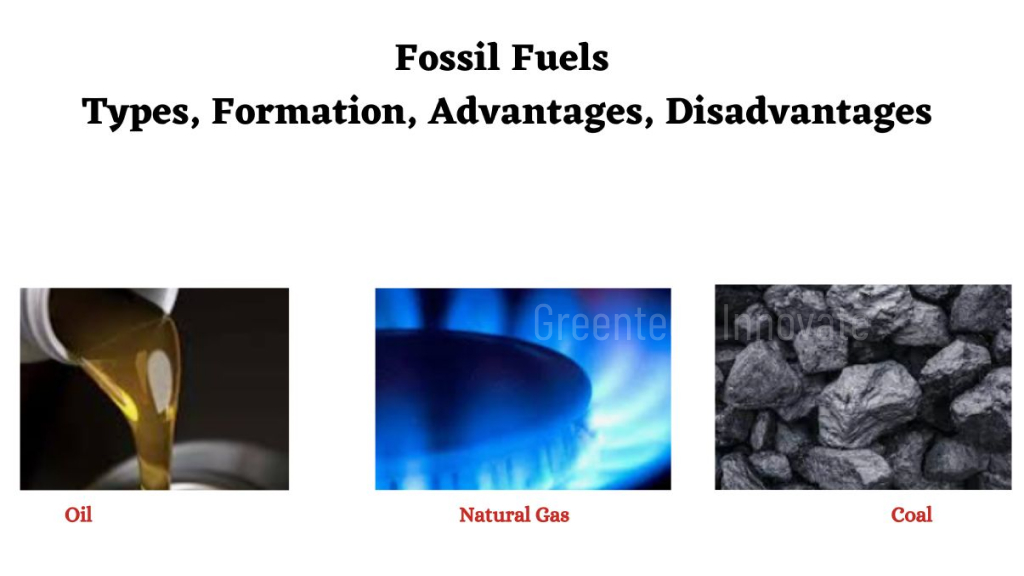
Welcome to our informative article on types of fossil fuels! In this comprehensive guide, we will explore the main categories of fossil fuels that power our world. You’ll learn about their origins, uses, and the impact they have on our energy production and environment today.
Fossil fuels are non-renewable resources that have played a significant role in meeting our energy needs for centuries. Understanding the different types of fossil fuels is essential for understanding how we harness energy and the environmental challenges we face.
Throughout this article, we will dive into the fascinating world of fossil fuels, including coal, oil, and natural gas. You’ll discover how these fuels are formed, mined, and the various ways they are utilized in industries and households around the globe.
We will also explore the environmental impact of fossil fuel use, shedding light on the greenhouse gas emissions and climate change concerns associated with burning these fuels. Additionally, we will investigate the negative effects on air quality, water pollution, and habitat destruction caused by the extraction and processing of fossil fuels.
Lastly, we will discuss renewable energy alternatives that offer potential solutions to our dependence on fossil fuels. Wind power, solar power, and hydropower are just a few of the exciting renewable options that are gaining traction in the quest for a sustainable future.
Now, let’s dive in and explore the fascinating world of fossil fuels and their impact on our planet!
Coal
Coal is one of the most widely used fossil fuels, an essential energy source that has shaped our world. It is formed from the remains of plants that lived and died millions of years ago, subjected to intense heat and pressure over time. This remarkable transformation produces a carbon-rich substance that holds immense energy potential.
In the process of coal formation, layers of decaying plant matter accumulate in swamps and marshes. Over time, these layers are buried under sediment, creating a conducive environment for the development of coal. Through a geologic process known as coalification, the plant matter transforms into different types of coal, such as lignite, bituminous coal, and anthracite, each with distinct characteristics and energy content.
Coal mining is the extraction of coal from underground or open-pit mines. Underground mining involves digging deep tunnels to access the coal seams, while open-pit mining involves removing the topsoil and earth to expose the coal deposits. Both methods have their pros and cons, with safety, environmental impacts, and cost considerations taken into account.
Coal has various uses across different sectors:
- Electricity Generation: Coal-fired power plants play a significant role in electricity production globally. Coal is burned to heat water and produce steam, driving turbines that generate electricity.
- Industrial Processes: Industries rely on coal for heat and energy in processes such as steel production, cement manufacturing, and chemical synthesis.
- Heating and Residential Use: In many regions, coal is used as a primary source of heating in homes, particularly in areas with limited access to other fuels.
- Coking Coal: Certain types of coal, known as coking coal or metallurgical coal, are essential for the production of steel. These coals are heated in the absence of air to remove impurities, leaving behind a solid carbon material utilized in steelmaking.
The versatility and abundance of coal have made it indispensable, especially in developing countries where reliable and affordable energy options are crucial. However, the combustion of coal releases carbon dioxide (CO2) and other harmful pollutants into the atmosphere, contributing to climate change and air pollution. Finding sustainable alternatives and implementing cleaner technologies are vital for reducing the environmental impact of coal as we strive for a more sustainable future.
Oil
Oil, also known as petroleum or crude oil, is another important fossil fuel. It is formed from the remains of ancient marine organisms that were buried and subjected to heat and pressure over millions of years. The extraction of oil involves drilling into underground reservoirs and pumping the oil to the surface.
One of the primary uses of oil is in transportation, where it is refined into gasoline, diesel, and jet fuel. These fuels power cars, trucks, airplanes, and ships, enabling the movement of people and goods across the globe. Oil is also utilized in the manufacturing industry as a raw material for plastics, lubricants, and chemicals.
In addition to its role in transportation and manufacturing, oil plays a crucial role in energy generation. It is burned in power plants to produce electricity and is used for heating in residential, commercial, and industrial settings.
However, the use of oil comes with environmental challenges. The combustion of oil releases carbon dioxide (CO2) and other greenhouse gases into the atmosphere, contributing to climate change. Furthermore, oil spills during transportation and drilling operations can have devastating effects on marine ecosystems.
Despite these challenges, the demand for oil remains high due to its versatility and energy density. Efforts are being made to develop cleaner and more sustainable alternatives, but for the time being, oil continues to be a vital resource that fuels our modern society.
Natural Gas
Natural gas is a versatile fossil fuel that has gained popularity due to its lower carbon emissions compared to coal and oil. It is formed over millions of years from the remains of plants and animals, just like other fossil fuels.
The extraction of natural gas involves various techniques, with one of the most common being hydraulic fracturing, also known as fracking. This method involves injecting water, sand, and chemicals into shale formations to release trapped gas. While the process has raised environmental concerns, it has significantly increased natural gas production.
Uses of Natural Gas
- Electricity Generation: Natural gas is widely used to generate electricity, offering a cleaner alternative to coal and oil. Power plants burn natural gas to produce steam, which drives turbines and generates electricity.
- Heating: Natural gas is commonly used for heating purposes, both in residential and commercial settings. It is used in furnaces, boilers, and water heaters to provide warmth and hot water.
- Chemical Production: Natural gas serves as a valuable feedstock in the production of various chemicals, such as ammonia, methanol, and hydrogen. These chemicals are widely used in industries like agriculture, manufacturing, and transportation.
The diverse range of uses for natural gas makes it an essential energy source in modern society. Its lower carbon emissions and relatively cleaner burning qualities have positioned it as a bridge fuel in the transition towards more sustainable energy systems.
Environmental Impact of Fossil Fuels

In this section, we will explore the environmental impact of fossil fuel use and its implications for our planet. Fossil fuels, such as coal, oil, and natural gas, have been the primary sources of energy for centuries. However, their significant contribution to global warming and climate change has raised concerns about their sustainability.
Greenhouse Gas Emissions and Climate Change
Burning fossil fuels releases large amounts of greenhouse gases, particularly carbon dioxide (CO2), into the atmosphere. These gases trap heat from the sun, leading to a phenomenon known as the greenhouse effect. The increased concentration of greenhouse gases in the atmosphere is a key driver of climate change, causing rising global temperatures, more frequent extreme weather events, and the rapid melting of polar ice.
Negative Effects on Air Quality
The burning of fossil fuels, especially coal and oil, releases pollutants into the air, which significantly degrade air quality. These pollutants, including sulfur dioxide (SO2), nitrogen oxides (NOx), and particulate matter (PM), contribute to respiratory and cardiovascular diseases, as well as smog formation and acid rain.
Water Pollution and Habitat Destruction
The extraction and processing of fossil fuels often lead to water pollution and habitat destruction. Offshore drilling for oil and gas can result in oil spills, causing severe damage to marine ecosystems and harming aquatic life. Moreover, the transportation of fossil fuels through pipelines and tankers poses a risk of leaks and accidents, putting our rivers, lakes, and oceans at risk.
- Oil spills can devastate marine ecosystems.
- Coal mining can contaminate water sources.
- Fracking for natural gas can cause groundwater pollution and earthquakes.
- The destruction of habitats during mining and drilling disrupts ecosystems and threatens biodiversity.
It is crucial to address these environmental impacts and transition towards cleaner and more sustainable energy sources. Renewable energy, such as wind power, solar power, and hydropower, offers viable alternatives that can reduce our reliance on fossil fuels and mitigate the detrimental effects on the environment.
Renewable Alternatives to Fossil Fuels
As concerns about climate change grow, renewable energy sources have become increasingly important. One of the key solutions to reducing our reliance on fossil fuels is the adoption of renewable energy technologies. Let’s explore some of the prominent renewable alternatives in the energy sector:
Wind Power
Wind power is an abundant and clean source of renewable energy. By harnessing the power of wind through wind turbines, we can generate electricity without producing harmful emissions or contributing to climate change. The installation of wind farms, both onshore and offshore, has gained momentum worldwide, providing a sustainable and reliable energy source.
Solar Power
Solar power is another popular renewable energy option. Photovoltaic (PV) panels capture sunlight and convert it into electricity that can power homes, businesses, and even entire communities. Solar energy is clean and readily available, making it an excellent alternative to fossil fuels. Furthermore, advancements in solar technology have made it more affordable and efficient, ensuring its viability as a long-term solution.
Hydropower
Hydropower, generated from flowing or falling water, has been utilized for centuries. Dams and turbines are used to convert the kinetic energy from water into electricity, providing a reliable and renewable energy source. Hydropower plants can range in size, from small-scale projects that power individual homes to large-scale facilities that supply electricity to entire regions.
Renewable energy sources such as wind power, solar power, and hydropower offer numerous benefits. They reduce greenhouse gas emissions, provide energy security, create job opportunities, and promote sustainable development. However, challenges exist, including intermittency in the case of solar and wind power, and environmental concerns associated with large-scale hydropower projects. Nonetheless, these renewable alternatives hold great potential in diversifying our energy mix and paving the way towards a cleaner and more sustainable future.
Conclusion
Understanding the various types of fossil fuels is crucial in comprehending the dynamics of energy production and the significant impact they have on the environment. Coal, oil, and natural gas have long been the primary sources of energy that power our world, but these come at a high cost to our planet.
The burning of fossil fuels releases greenhouse gases, contributing to climate change and global warming. In addition, the extraction and processing of these fuels lead to air pollution, water contamination, and habitat destruction. The environmental consequences are undeniable.
However, there is hope for a sustainable future. Exploring and adopting renewable alternatives to fossil fuels is vital. Renewable energy sources such as wind power, solar power, and hydropower offer cleaner, more sustainable options for energy production. They produce minimal greenhouse gas emissions and have a significantly lower impact on the environment.
By transitioning to renewable energy and reducing our reliance on fossil fuels, we can mitigate the adverse effects of energy production on the environment. It is our collective responsibility to embrace these alternative sources of energy and strive towards a greener, more sustainable future.
FAQ
What are the main types of fossil fuels?
The main types of fossil fuels are coal, oil, and natural gas.
How is coal formed?
Coal is formed from the remains of plants that lived and died millions of years ago. Through a process called coalification, these remains are subjected to heat and pressure, transforming them into coal.
What are the uses of coal?
Coal is primarily used in electricity generation, industrial processes such as steel production, and as a heating fuel.
What is crude oil?
Crude oil, also known as petroleum, is a liquid fossil fuel that is extracted from underground reservoirs. It is a mix of hydrocarbon compounds and is the raw material for various oil-based products.
How is oil extracted?
Oil is extracted from underground reservoirs through drilling. Once a well is drilled, the pressure of the reservoir pushes the oil towards the surface, where it can be collected and processed.
What are the uses of oil?
Oil has numerous uses, including transportation fuel, manufacturing of plastics and chemicals, and energy generation.
What is natural gas?
Natural gas is a gaseous fossil fuel primarily composed of methane. It is formed from the remains of ancient marine organisms. Natural gas is often found alongside oil deposits.
How is natural gas extracted?
Natural gas is extracted through various methods, including traditional drilling and hydraulic fracturing (fracking). Fracking involves injecting a combination of water, sand, and chemicals into shale formations to release trapped natural gas.
What are the uses of natural gas?
Natural gas is used for electricity generation, heating, cooking, and as a feedstock in the production of chemicals and fertilizers.
What is the environmental impact of fossil fuels?
The burning of fossil fuels releases greenhouse gases such as carbon dioxide, contributing to climate change. Fossil fuel extraction and processing also result in water pollution, habitat destruction, and air pollution.
What are some renewable alternatives to fossil fuels?
Renewable alternatives to fossil fuels include wind power, solar power, hydropower, geothermal energy, and biomass. These sources provide clean energy without the negative environmental impacts associated with fossil fuels.




